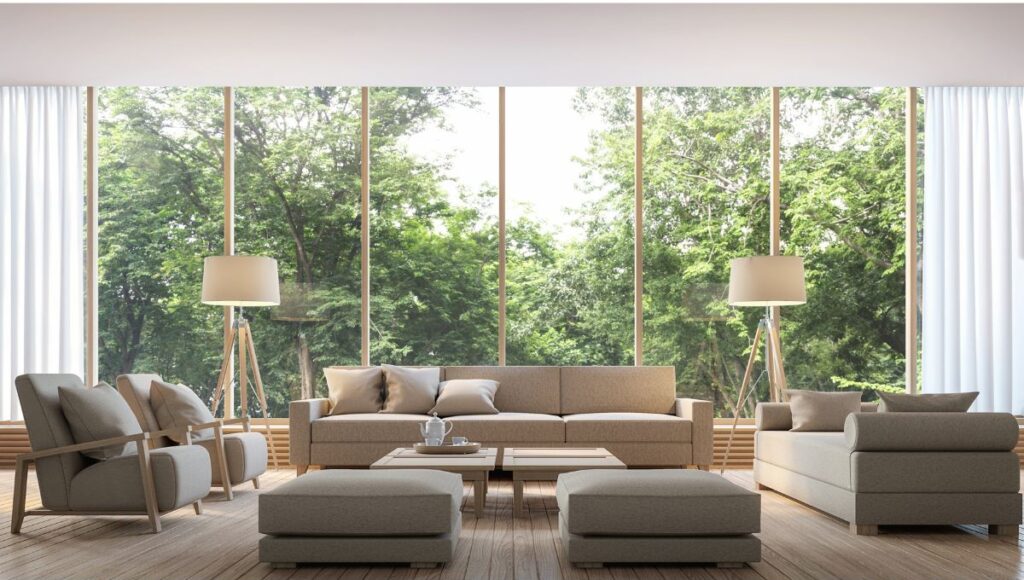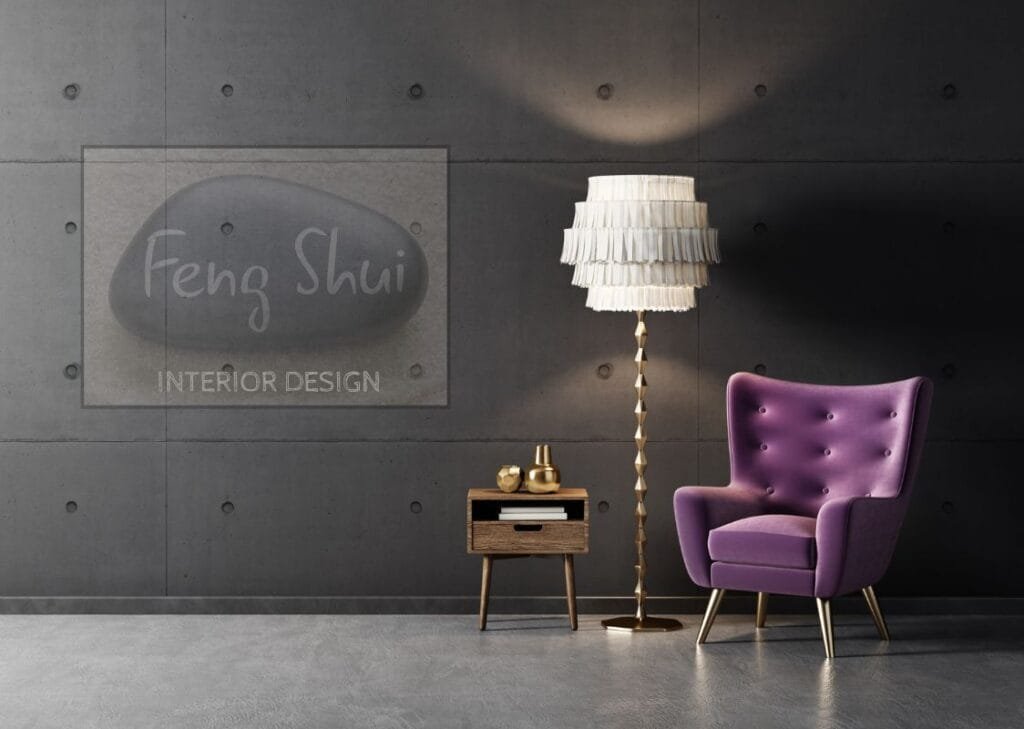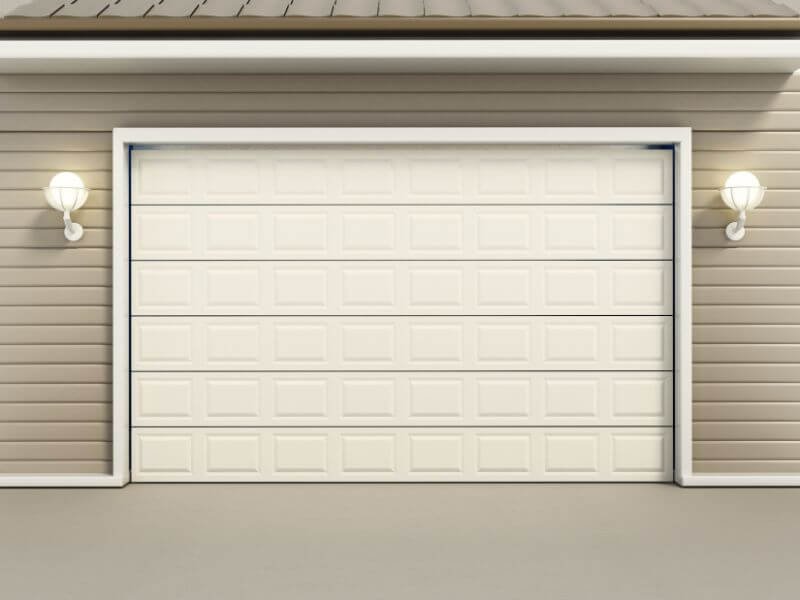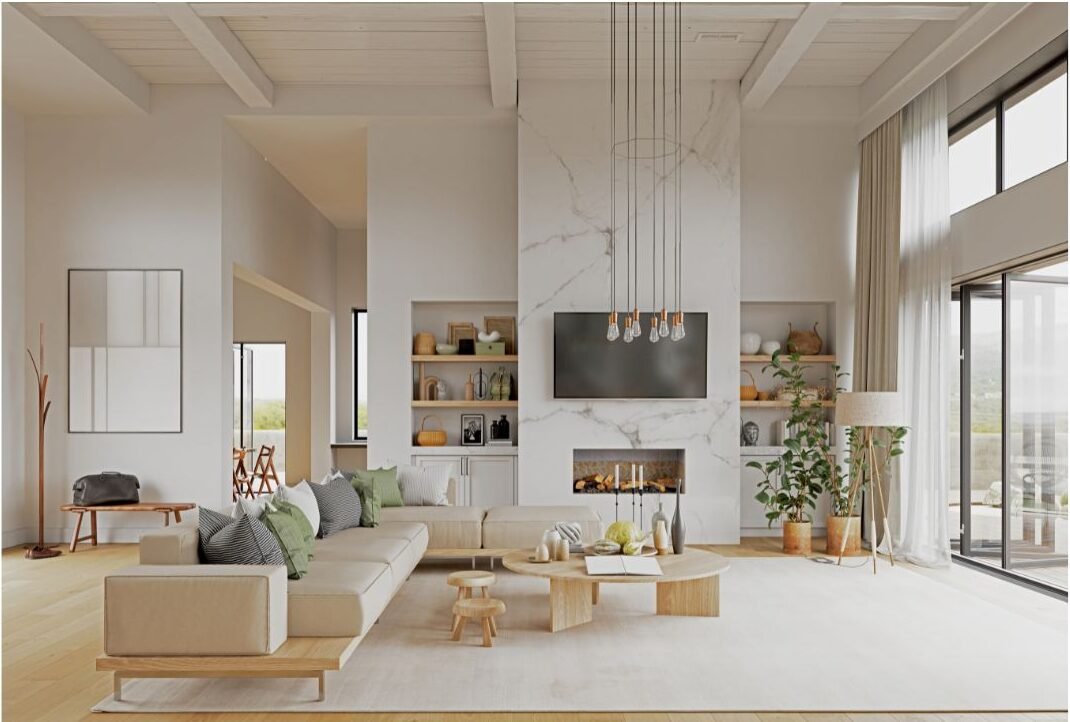Feng Shui is an art and science that the ancients brilliantly understood. Simply, it interprets how orienting ourselves in space affects us and takes into account the universal laws and laws of nature.
Interior design, while an art form in itself, focuses on functional spaces. However, when these two concepts merge, the results are nothing short of transformative. Homes and workplaces extend beyond their physical form, becoming a sanctuary for peace meticulously designed for their occupants’ well-being.
The Mystical Power of Applying Feng Shui to Interior Design
Introducing Feng Shui principles into our built environments serves a specific purpose and has a deep meaning. It affects many aspects of a person’s life, including both mental and physical.
One can use its subtle guidelines to manipulate the energy flow within their surroundings to promote health, passion, relationships, and success.
Furthermore, aligning with intention and arranging things in a certain order improves energy flow and breaks any blockages. It’s like adding a dash of magic to a design!
Let’s explore these essential Feng Shui interior design strategies recommended by consultants.
1. Energy flow is the foundation of Feng Shui design

At the heart of Feng Shui is the concept of energy flow. Practitioners pay close attention to the flow of energy, or chi, within a space, making deliberate adjustments to enhance it. That’s why before applying Feng Shui principles, it’s important to understand energy flow, which is central to the practice.
Energy, often called “Chi,” is a subtle force connecting everything in the universe. It exists in every object, from furniture fibers to plant cells, each carrying its own unique essence. This energy flows through our surroundings, including our homes, where every item, material, and color contributes to the overall atmosphere.
Visualize energy as water flowing through your space—sometimes freely, sometimes blocked or even stagnant.
This energy influences us on a subconscious level, shaping how we feel and interact with our environment. The arrangement of your home directly affects energy flow and, consequently, your mental and emotional well-being. While invisible, the effects of this energy are palpable.
By creating a space that allows for a smooth and effortless flow of energy, the overall feel of the space becomes more positive. This can be accomplished through the thoughtful use of color, light, decor, furniture placement, and various other elements of construction and design.
2. Space design using Feng Shui's Bagua Map
Just as reflexology illustrates how different parts of the foot correspond to various areas of the body, the Bagua grid connects specific areas of your home to different aspects of your life.
In reflexology, touching or treating a particular part of the foot can improve specific physical concerns. In a similar manner, the Bagua system also identifies certain issues that can be addressed by enhancing elements and implementing solutions that foster well-being according to the grid segment.
Deeply rooted in the belief that your home environment reflects your life, the Bagua grid serves as a thoughtful blueprint for enhancing nine distinct areas:
- Fame & Reputation
- Love & Relationships
- Family & Health
- Center & Balance, Creativity & Children
- Knowledge & Wisdom
- Career & Life PathHelpful People & Travel
- Wealth & Prosperity
Each of these areas is connected to a specific energy center in your space, guiding you toward a more balanced and fulfilling life.
This practice is vast, and one can either get really detailed or simply follow it intuitively. An example of practicing Feng Shui’s bagua map technique would be if you are looking to enhance your career, you would focus on the career area near your front door by adding water elements like a small fountain, incorporating black or dark blue accents, and displaying career-related symbols, such as awards or motivational quotes etc.
The main objective is to incorporate your desired outcomes and goals into each area. This is achieved by eliminating obstacles, circulating positive energy, and infusing each space with positive intentions. Creativity, excitement, and belief are essential components of this process, helping to manifest these enhancements.
3. Use of Nature-Inspired Materials and Design
Feng Shui is deeply connected to nature, emphasizing the importance of bringing natural elements indoors. Our senses are activated when we are surrounded by nature’s beauty.
Whether it’s the changing of seasons, the dance of clouds, trees swaying in the breeze, rainbows after rainstorms, sparkling sunlight on a winter day, or a white landscape covered in snow, experiencing all of these moments of wonder from indoors is a delight. Even seeing a bougainvillea branch with magenta flowers through a window adds vibrancy to the room itself.
The use of natural materials, abundant light, and views are a few ways to create environments that feel connected to nature and avoid isolation. Integrating materials such as wood, which represents growth and vitality, and stone, which represents stability and grounding, brings nature’s energy indoors.
In today’s fast-paced world, where most of our time is spent indoors, integrating these elements into living and working spaces is highly recommended.
No matter where one works, nature views increase creativity, enhance focus, and restore one’s energy. Consider moving your desk closer to a window if you don’t have enough light inside. It will increase your energy levels and mood. You can also place plants that require little light, such as:
- golden pathos,
- peace lilies,
- ferns,
- snake plants,
- bamboo shoots, etc.
Besides aging gracefully, natural materials also add character and charm to a space. Examples include:
- the weathering of an antique desk,
- the rich patina developed on copper,
- the softening of leather over time,
- the fading and distressing of wooden furniture that gives a beautiful aged look, and
- the rusting of iron accents that adds character and charm.
Over time, the brick and stone facades of structures change color and texture, adding depth and charm to the architecture. These natural processes enhance the visual appeal of the items and tell a story about their history. Clay, stone, wood, linen, cotton, bamboo, etc., can all be used to create natural spaces.
4. Applying Feng Shui's brilliant concept of balancing Yin and Yang energies
One of the most fascinating aspects of Feng Shui Design is the concept of Yin and Yang.
The essence of Yin: femininity, calmness, softness, tranquility, darkness, coolness, stability, introspection, natural elements (like water and earth), curved lines and shapes, cozy, intimate spaces.
The essence of Yang: Yang represents energy, brightness, movement, activity, lightness, warmth, expansion, outward expression, structured elements (like metal and fire), sharp angles and lines, open, expansive spaces.
These complementary or opposite forces gain meaning only in relation to each other, where one doesn’t exist without the other. We wouldn’t know what light (Yang) is without knowing darkness (Yin), and we wouldn’t know what cold (Yin) is without knowing hot (Yang).In order to design a harmonious space, the right balance between these opposing energies is key.
This concept can be applied to many aspects of life. For example, today’s Western societies and various cultures place a high priority on productivity and achievement. This focus on Yang energy leads to overactivity and a constant state of being on-the-go, emphasizing achievement over quiet reflection and stillness, which are equally valuable.
This emphasis can be balanced with Yin energy, such as introspection and inner peace. Eastern practices like meditation and yoga have gained popularity in recent years, suggesting a more balanced approach that incorporates both Yin and Yang principles. This shift is a positive step towards restoring balance.
An excess of Yin or Yang energy creates an imbalance, so it is crucial to strike a balance between the two. Too much Yang may lead to anxiety, hyperactivity, emotional detachment, distraction, and lack of focus. On the other hand, an excess of Yin can trigger depression, hypersensitivity, inertia, and hopelessness.
In a Yin environment, such as a gloomy, rainy area, people who lean towards Yin energy may experience depression or lethargy. They should introduce more Yang elements into their spaces. On the other hand, hyperactive individuals may benefit from more Yin energy in their surroundings if they live in a bustling city center with bright lights and constant activity.
Designing with Yin-Yang Balance
From our flooring to the final touches in furnishings, lighting, and decor, yin and yang energies are reflected throughout our interior and exterior spaces. Materials, finishes, decorative items, colors, and textures play an important role in this process.
For instance,
Yang interiors are characterized by:
- White hues
- Abundant light
- Bright tones
- Lightweight furniture
- Open spaces
- Vertical elements
Yin interiors are characterized by:
- Dark tones
- Heavy furniture
- Cluttered spaces
- Horizontal elements
An evenly balanced room blends the yin and yang elements harmoniously. A general rule to follow is to maintain a balance of 60% yang energy and 40% yin energy in your living space. By doing this, you can avoid a space that is too yin, which may cause stagnation and inactivity, or too yang, which can feel stressful and make it difficult to relax.
Here are some examples of how to integrate Yin & Yang into design:
Pair soft, plush furniture (yin) with vibrant, stimulating colors (yang) to create a space that offers both relaxation and stimulation.
Integrating natural materials like wood and stone (yin) with sleek, modern elements such as glass and metal (yang) for a balanced blend of warmth and sophistication.
Balance a minimalist layout and clean lines (yang) with cozy textiles and layered textures (yin) to design a unified and inviting interior.
Mix calming, neutral tones (yin) alongside bold, geometric patterns (yang) to add visual interest and energy to a space.
Blend organic shapes and curves (yin) with angular, structured elements (yang) to convey a sense of natural flow and architectural balance.
Combine natural light and airy, open spaces (yang) with intimate, dimly lit corners and soft lighting fixtures (yin) to create a dynamic and comforting ambiance.
Harmonize natural elements such as plants and water features (yin) with technological innovations and sleek gadgets (yang) to create a space that feels both grounded and forward-thinking.
This balance affects our lives in every aspect, including our relationships, family dynamics, and daily behavior, as it reflects the natural equilibrium sought in nature. It’s important to consider the subconscious benefits of Yin and Yang, as we are wired to seek balance in our lives. When this balance is disrupted, it can lead to frustration, confusion, and disconnection.
5. Decluttering to Release Stagnant Energy in Feng Shui

One form of negative energy in our space is clutter. If we truly believe that the spaces we live in are a reflection of our inner selves, then clutter in these spaces might be a reflection of the inner turmoil we are experiencing, or an indication that we need to address some level of chaos.
The presence of clutter disrupts energy flow and creates stagnant energy. Untidy closets, overflowing drawers, and scattered paperwork may not only reflect disorganization, but a state of unresolved anxiety or issues.
At some level, clutter is seen as a physical manifestation of mental or emotional stress, preventing growth and positive energy from flowing freely. Whether mental or emotional, it can create a cloud of low energy that lingers in the subconscious and drags one down.
This feeling is tangible and real and recognizing its causes can often help us deal with our own underlying issues. In the presence of stagnant energy caused by clutter, we can feel sluggish, overwhelmed, and even depressed.
Clutter is often caused by a feeling of scarcity – metaphorically, clutter represents stagnant, impure energy that obstructs renewal.
So it’s important to deal with this mindset by removing what no longer serves and making room for fresh energy. Anything no longer aligned with your highest good or occupying space for new energy to enter should be removed. Your home should ideally house only items you cherish, use or value.
The types of clutter we accumulate can also be telling. For example:
- Holding onto broken objects or unworn clothes may symbolize reluctance to release the past.
- Keeping gifts from failed relationships or depressing artwork that subconsciously drains energy may reveal our emotional state.
- Even unfinished projects lying around can represent a mental block, preventing us from moving forward.
Energy clutter, such as:
- photos of disapproving people
- old gifts from failed relationships
- inherited furniture kept out of guilt
All these instantly depletes energy. Our mental and emotional clutter, such as unresolved emotional issues, avoiding tasks, and draining relationships, affect our entire lives, keeping us stuck in the past and draining our energy. This results in feelings of overwhelm, exhaustion, frustration, confusion, or depression.
To address physical clutter, consider:
- tidying up junk mail
- discarding expired food
- replacing broken light bulbs and damaged items
- donating unused items
- discarding possessions with negative associations.
As a result of decluttering, we experience a sense of release, freedom, and rejuvenation. Start by clearing one area to trigger a chain reaction in a positive direction, allowing new possibilities to emerge.
Imagine the satisfaction of gradually clearing clutter, one drawer or shelf at a time. Being able to keep only what matters and serves you is empowering. Starting small and targeting stress-inducing areas can build momentum for larger projects.
When we declutter, we face unresolved emotional issues and lingering tasks, thus paving the way for a more fulfilling future. Change can be challenging, but it always leads to personal growth. From a Feng Shui perspective, the first rule is to clean before energizing.
6. Space Cleansing To Purify & Instill Positive Energy
After decluttering and cleaning, the next step is space cleansing. No, this isn’t some bizarre or mysterious ritual practice. Positive, healthy, and loving energy is brought into your surroundings through this process. Cleansing simply removes negative emotions, thoughts, occurrences, and stresses that have accumulated and absorbed in your surroundings.
The Taoists believe that good fortune comes from harmony with the earth. The land interacts with and affects us, and in turn we affect the land. This makes complete sense given the powerful feedback loop involved.
When we encounter a place that is blessed, we associate it with goodness and riches. On the other hand, we can quickly recognize or feel damaged or neglected places. They have a dull, dark energy and may be perceived as draining or threatening.
Traumatizing events like conflict, war, wasteful agriculture, or unethical building practices result in negative energies being released into the environment. Consequently, the entire ecosystem and habitat can suffer, become ill, move, or cease to exist.
Begin by setting a strong intention. Open windows and doors to invite fresh energy into your space. Enhance the cleansing ritual by lighting a scented candle and expressing gratitude, while visualizing positive energy flowing in.
You can also clap your hands in each corner to disperse stagnant energy. Afterward, wash your hands to symbolize purification. Infusing the air with a cleansing aroma can also be effective, like burning incense or sage. As you perform these cleansing rituals, visualize brilliant light filling every corner of your space.
7. Integrating The Wisdom Of The Five Elements of Feng shui
In an Eastern perspective, nature’s clock consists of five elements, which represent the five transformational phases of energy—wood, fire, earth, metal, and water. The wisdom contained in this concept is so profound that it’s truly exciting to share it. It can be applied to anything in life, like a human’s lifecycle from birth to death or an idea’s journey from conception to realization.
“Death” or “end” does not necessarily mean an end, but rather the transformation of energy into renewal, rebirth, or a new beginning – energy never truly dies, but only transforms into something new.
Here are some creative ways to understand the concept:
In The Context Of A Cycle Of Seasons Or A Day
The change of seasons reflects the dynamic interplay of the five elements:
- Winter, associated with Water, symbolizes stillness and preparation as life lies dormant beneath the surface, ready to blossom in spring.
- Spring, like the morning, symbolizes Wood element of new beginnings and growth.
- Fire represents summer’s peak energy and activity, like the warmth and intensity of midday sun.
- In Autumn, Earth brings stability and abundance of harvest, while in Winter, Metal brings reflection and conservation.
- Night, reminiscent of Water, offers rest, rejuvenation, and introspection, mirroring the enigmatic allure of the deep night.
In The Lifecycle Of A Business
Water is the phase in which ideas are born or imagined. Growth follows the wood phase, representing innovation and expansion. A business’ peak phase is represented by fire, followed by earth’s stability, metal’s refinement, and then a return to water as it transforms or ends, mirroring the universe’s cyclical nature.
In The Context Of Human Life
Each element represents a stage in a person’s development:
- Wood symbolizes new beginnings and growth in childhood.
- The fire element represents adulthood, which is characterized by passion and creativity.
- Maturity aligns with the earth element, which embodies stability and nurturing relationships.
- Life’s later stages embody the metal element, reflecting wisdom and refinement.
- Lastly, old age symbolizes the water element, symbolizing introspection and the unknown.
This continual cycle permeates throughout the universe!
How Do The Five Elements Relate To Design And What Purpose Do They Serve?
The energy of each element can be channeled into built environments through furnishings, fabrics, finishes, colors, shapes, and textures, using the five elements as metaphors. This approach creates a harmonious balance within the space.
- Wood: Movement and Vitality
Wood elements inspires motivation, action, and initiative, igniting creativity and productivity. With colors ranging from pale green to deep forest, vertical shapes, like tree trunks and columns, artwork featuring forest scenes and floral motifs, fresh plants and flowers stimulate wood energy.
- Fire: Illumination and Aliveness
Fire symbolizes vitality, passion, and action, bringing excitement and vibrancy to spaces as it is the most Yang element. Warm colors such as red, orange, and pink stimulate activity, while shapes reminiscent of fire, like stars and triangles, can be incorporated into designs. Materials like silk, satin, and leather embody fire’s energy. Fireplaces, artificial lights, sunlight, and candles also bring fire energy.
- Earth: Balance and stability
Earth energy is grounding and brings stability and balance to a space, resonating with soil, rocks, and crystals. Natural elements like exposed brick, granite countertops, and stone flooring emphasize earth’s stability, with earthy tones ranging from sandy beach and mocha brown. Earthy shapes and flat surfaces symbolize the earth, while contemporary furnishings with low horizon lines reflect its energy.
- Metal: Cleanliness and Order
The metal element brings qualities of clarity, precision, and structure to a space. It promotes order and discipline. Logic, rationality, and focus are emphasized in workspaces with metal energy.
Furthermore, metal energy encourages intospection, reflection, and refinement, supporting intellectual pursuits.. Furniture or objects in silver or gold hues, neutral backdrops, metal sculptures, minimalist designs, technology, etc. can bring metal’s energy. However, too much metal can create cold, sterile environments, so balance is essential.
- Water: Contemplation and Peacefulness
Water, the most Yin element, gives a space a sense of flow, depth, and tranquility. It symbolizes contemplation, intuition, and emotional healing, promoting a calm and serene atmosphere.
Adding water elements to a space can enhance introspection, creativity, and intuition, making it suitable for areas requiring relaxation and reflection, such as bedrooms, meditation spaces, and bathrooms.
Water’s depth is reflected by deep dark colors, like black and navy, while its flow is mimicked by wavy curves and irregular patterns. Real water features, such as fountains or aquariums, activate water energy, fostering a calm and nurturing environment. Other water symbols include fish, shells, glass, and reflective surfaces.
8. Intentional Color Selection for Functional Spaces
We are surrounded by colors that can heal, invigorate, relax, or energize us. Colors, according to Feng Shui, corresponds to a particular element and carries it’s own energy thus it’s important to understand its essence.
A good way to choose colors is to consider the function or intention of the space. This could include uplift, motivate, inspire, or soothe, rest, or retrieve.
Moreover, colors emit different energies, which allows them to be strategically incorporated into a space.
For instance, green is calming because it’s reminiscent of nature, while purple, associated with royalty, adds an air of luxury to the bedroom. A splash of vibrant red at the front door can invite liveliness and energy.
Blue is believed to promote serenity and relaxation, while yellow and orange are considered energizers. White is associated with purity and cleanliness, while black is associated with mystery and sophistication.
9. Using Feng Shui Principles on Objects and Decor to Activate Energy Flow
Most of the time we may not even be aware of how objects in our surrounding affects us.
Energy, whether positive or negative, is carried throughout every cell of our body and influences our emotions constantly and each book, vase, chaise, armoire, speaks to you in some way so assess how it’s presence makes you feel.
Think about what is the first thought or reaction that comes to mind? If it is a gift from someone, how do you feel about the person? How do you feel about having it around? Is the item holding you back or moving you forward?
Inherited items, antiques, and objects possess the energy of the people who owned them, and since each item carries the energy imprint of the owner, pay special attention to those particular items.
It is worthwhile to assess whether the item aligns with your desired energy (example items from a previous marriage). If not, consider whether it should be passed on, removed, or cleansed. Keep items that bring you joy, love, and happiness to ensure that your living space is filled with positive energy.
Energy within any environment can be altered, moderated, aligned, or stimulated to bring order and balance according to Feng Shui. It is possible to encounter different types of energy as you move from one space to the other.
This includes sharp energy created by pointed objects or sharp corners of walls rather than curves, heavy energy created by the weight or age of furniture, fast-moving energy produced by long hallways or staircases, oppressive energy produced by exposed beams and low ceilings, stagnant energy caused by clutter and excessive decor, and missing energy caused by deficient energy centers or corners.
To achieve the right balance in rooms, solutions and enhancements are used to correct energy flow.
Effective enhancements include multitaskers like mirrors, crystals, and wind chimes; energizers like plants, light, and water features; stabilizers like heavy or solid objects; and illuminators like color, symbolic objects, and artwork. Enhancements placed properly can redirect energy toward real-time goals. Having faith in the effectiveness of each enhancement is also important.
Mirrors:
A mirror can be a powerful tool for influencing the energy in a room beyond its decorative role. They can activate, circulate, deflect, and amplify energy depending on their placement. In dark corners, mirrors reflect light, while in small rooms they visually expand the space. In fact, they can even double the uplifting energy of a vibrant piece of artwork or a natural feature such as a water fountain placed behind them.
Mirrors can also redirect energy flow. For example, placing a mirror near a front door that leads directly to a bedroom can help redistribute unwanted incoming energy.
Using mirrors to their full potential:
- Use large mirrors that reflects your entire body so no body parts are obscured.
- Strategically position them to showcase a beautiful view or that inspires positive energy, as the reflection will be amplified.
- Keeping them sparkling clean ensures optimal energy flow.
- It is best to avoid using cracked, broken, or tarnished mirrors due to their potential distortion of reflections and disruption of energy flow.
- Clear the area in front of mirrors to avoid clutter’s appearance as well as stagnant energy that clutter brings.
Crystals
In Feng Shui, crystals are round faceted clear glass ornaments that reflect light or high-vibrating rocks formed within the earth. They transmit different frequencies that attract, activate, hold, disperse, and circulate energy.
In a similar way to mirrors, crystals can correct specific energy imbalances. They can slow down overwhelming energy in large rooms, disperse fast-moving energy in long hallways, stimulate stagnant corners, and circulate energy throughout a space. They can even soften the visual impact of sharp edges and create rainbows of color when hung in windows.
Plants, Light & Moving Water
Placing plants, lamps, and water features in the corners immediately uplifts the energy and brings shifts the energy which help with bringing goals to life.
The presence of plants connects us to nature and to the life force of the planet. As nature’s air purifiers, they convert carbon dioxide into oxygen and clean the air we breathe.
Beyond this, they induce a feeling of serenity and circulate positive energy. Studies have shown that surrounding yourself with plants can reduce stress and improve overall well-being.
Fresh flowers add color and vibrancy, but require more frequent care. Here’s where silk flowers come in – they offer a beautiful and low-maintenance alternative, adding lasting beauty and charm to your space. Whether real or silk, incorporating plants and flowers into your surroundings is a simple yet simple way to cultivate positive energy.
The more plants you incorporate into your space, the greater the benefit.
Healthy natural plants neutralize the negative effects of electromagnetic fields emitted from appliances and electronics. Strategically placing them near your desk or workspace can provide both a visual and energetic boost. As natural energy conductors, they elevate and stimulate stagnant corners while calming fast-moving energy in long hallways and staircases.
There are a few plants to avoid such as:
- Avoid Cacti: Their sharp spines can create a hostile environment, symbolizing barriers to positive energy flow. Soft, rounded petals promote a pleasant environment.
- Steer Clear of Dying or Wilted Plants: They represent decay and bring negativity to a space. Healthy plants are crucial for positive energy.
- Bypass Artificial Plants: They lack vitality, causing stagnant energy and hindering positive Chi flow.
- Stay Away from Invasive Plants: They symbolize overgrowth and chaos, disrupting energy balance and flow.
- Avoid dried flowers: They lack vibrancy and life force, representing stagnant energy.
- Refrain from Plants with Spiky Leaves: Like snake plants or agave, they may create tension and unease, introducing negative energy.
- Be Cautious with Strong-Scented Plants: Overpowering or unpleasant scents can affect energy balance.
Light
Lighting choices can be used to manipulate energy flow. Natural lighting is favored in Feng Shui, as it brings in positive energy from the outdoors. The light from the sun, in particularly, boosts spirits, expands space, and stimulates creativity in a room.
Light, whether natural or artificial, is an essential regardless. Light raises, stimulates, activates, generates, and intensifies energy. A space’s energy dynamics are influenced by a variety of light sources, including electricity, candles, or fireplaces. Since most people spend most of their time indoors, exposure to healthy light is essential. Consider installing skylights to add more brightness and open your drapes and windows to let in as much natural light as possible.
The aroma of scented candles, for example, further enhances energy levels and promote relaxation. Since full-spectrum light bulbs mimic sunlight, they are a recommended option for energizing spaces and improving productivity.
Water features
Feng Shui aligns water with prosperity and health. Moving water can revitalize stagnant corners, stimulate finances, and replenish depleted energy in your space. Water fountains and aquariums, for example, are powerful energizers.
Water symbolizes money, and by moving or bubbling or circulating, they create a continuous flow of wealth and abundance. Water features also mimic nature indoors, as water splashing against pebbles masks unwanted noise and generates negative ions, promoting a sense of ease and well-being.
By maintaining a clean and continuously running water feature, your finances will remain clear and free-flowing. In aquariums, fish symbolize wealth and life, which further adds to the enhancement and brings good luck. Fish ponds outside can even increase prosperity and abundance.
Symbolic Objects
Feng Shui suggest to use artwork, photos, and decorative objects to symbolize what you want to manifest.
Objects within our environment affect us physically, emotionally, mentally, and spiritually. For example, if you desire a romantic relationship, your symbolic items might include a photo of two people holding hands, or a love novel. If your goal is to purchase your dream house, your symbols might include a home decorating magazine or a photo of the keys to your new dream house.
As you place these items in your environment, you are actively and purposefully programming your subconscious to help you achieve your goals. Any object you love or find beautiful can serve as an inspiration.
Heavy Objects
Occasionally, the energy in living spaces moves too quickly, causing imbalance, tension, or discomfort. In order to stabilize and calm the rushing energy, consider placing stabilizers such as heavy objects.
These stabilizers will help energy remain steady and in control of absorbing and blocking it, thus reflecting in your daily life positively. Heavy objects can be placed in long corridors, outside the front door, and at the bottom of staircases.
The presence of large furniture pieces, bookcases, planters, large art pieces, columns, pianos, glass, iron, and stone sculptures provide visual weight and stability to a room.It should be noted, however, that the presence of too many weighted items in a space can produce a heavy feeling which can slow down the flow of energy.
Art
In addition to serving as a valuable tool for self-expression, art serves to reduce stress, motivate, and inspire. Whenever possible, display colorful, abundant, and positive art. Avoid showing pieces depicting negativity, demise, sadness, loneliness, or eerie imagery, as they reflect the same energy back into the room.
Select strategic places to display your most inspiring artworks, like opposite your bed so you can see them when you wake up, or across your front entrance the moment you walk in. In this way, you are constantly exposed to positive visual stimuli.
Each item in your life holds not just a memory but also an energetic attachment that influences you, whether consciously or unconsciously. This influence operates on two levels: external significance and a deeper emotional or memory association.
Consider the energy each object in your living space exudes. For instance, a photograph depicting a woman and a hungry child on a street corner evokes a specific reaction. In contrast, a picture of a sunlit beach scene inspires different thoughts and responses. This is the external significance at play.
However, there’s a deeper layer to this dynamic. Each object carries a history — where you acquired it, what motivated you to buy it, who you were with, who gifted it to you, and what your relationship was like with that person. Further, the circumstances of your life at the time or the cost add to its significance. Often, we are unaware of how deeply these associations affect us.
It’s essential to decorate your space with objects that bring happiness and joy, as they directly impact your emotional well-being. So determine what kind of energy every item in your space emits? Each item speaks in its own unique way. Reflect on whether it elicits feelings of joy or sadness, and reflect on your immediate reaction. Does it bring back cherished memories, or hold you back in the past?
Display pictures of you and your loved ones looking happy, healthy and confident brings a smile to your face. Because the energy emanating from the photos is that of positive feelings, it will be felt by everyone in the space.
10. Embracing Eco-Wisdom Of Feng Shui
The concept of Feng Shui is based on giving and receiving; as you bring positive energy into your surroundings, you will receive it back in the form of health, wealth, and success.
As we honor and care for our resources—nurturing the land that sustains us, the water that nourishes us, and the air that we breathe—we in turn receive their blessings. This deep connection is why Feng Shui practices emphasize alignment with nature, highlighting the importance of creating eco-friendly spaces. For example:
The unique vitality of natural elements cannot be replicated by manufactured ones, according to Feng Shui. Nature’s materials, for instance, contain an energetic resonance unmatched by lab-made objects, emphasizing the benefits of incorporating them into living spaces. Unlike machine-made items that lack this personal touch, handmade items radiate positive energy derived from their artisans’ pure intentions during creation.
Feng Shui emphasizes the holistic benefits of natural sunlight through its choice of natural versus artificial lighting. Despite the fact that artificial light serves a purpose, it cannot match the vitalizing and health benefits of sunlight.
Feng Shui also considers indoor air quality, as fresh air contains negative ions that cleanse and rejuvenate spaces. By contrast, the air provided by HVAC systems or air filters used for indoor air purification may lack the essence of fresh air, causing stagnant energy flow within interiors
To prevent unnecessary accumulation of possessions, Feng Shui discourages excess consumption and clutter. In addition to filling landfills, clutter disrupts energy flow in our spaces while creating stagnant energy. As a result, we reduce landfill waste and ease the burden on our planet. Thus, Feng Shui and eco-conscious living go hand in hand to create balanced, ecologically conscious spaces that contribute to preserving our planet. Using eco-conscious practices and mindful consumption, individuals can promote balance and vitality both in their living spaces and in the environment through Feng Shui.
- Feng Shui and biophilic design are also closely related.This concept serves as a modern template for designing spaces that are more in tune with nature using well-documented guidelines.A variety of natural elements and patterns are incorporated to enhance occupant comfort, productivity, and a sense of connection to the natural world.This can be achieved through a living wall, abundant lighting, organic materials like wood and stone, nature-inspired patterns, earth-inspired colors, and bringing fresh air into the room.
Being good stewards of our planet directly translates into being good
stewards of our homes and ourselves as well. It is all related!
Something a little intriguing about Trees….
Trees radiate healing energy into the environment! When you walk among huge trees you can actually feel the vitality and peace they radiate.
We rely on trees for clean air by absorbing carbon dioxide and releasing oxygen, as well as regulating temperature and humidity for a more comfortable environment. It has been shown that spending time in nature, particularly around trees, can reduce stress and improve mood. Around the world, trees symbolize life, growth, and renewal.
Throughout history, people have believed in the healing power of trees to cure a variety of ailments. In some cultures, they are believed to house spirits or possess sacred properties, fostering spiritual connections and offering healing. Herbal remedies are also derived from tree parts, tapping into their natural healing properties.
As an example, Celtic cultures acknowledge trees like the oak for their strength and protection, while Ayurveda recognizes trees like the neem for their purifying properties. In Japan, Shinrin-yoku, or forest bathing, involves immersion in nature for enhanced well-being, with trees playing a central role.
The effectiveness of these beliefs in physical healing is often based on anecdotal evidence or traditional practices rather than scientific evidence. But maybe if receptive, one can absorb a lot of life-force energy from a friendly tree in a backyard or nearby park.
Don’t underestimate the incredible sense of well-being that can follow after connecting with a tree and asking for some of its extraordinary life force. However, it’s essential to respect their powerful presence and intuitively assess whether the tree is receptive before approaching it.
Point Of Alignment
The integration of Feng Shui principles into interior design can transform spaces into harmonious environments that promote well-being, balance, and positive energy flow.
By understanding and applying the core principles of Feng Shui, designers can create spaces that not only look visually appealing but also enhance the lives of those who inhabit them. From space planning and furniture placement to color selection and embracing natural materials, Feng Shui offers a holistic approach to interior design that goes beyond aesthetics.
So, let’s embark on a journey of mindful living and conscious design, where our spaces become a reflection of our well-being and a sanctuary for positive energy to thrive.
Read more about Feng Shui here!







